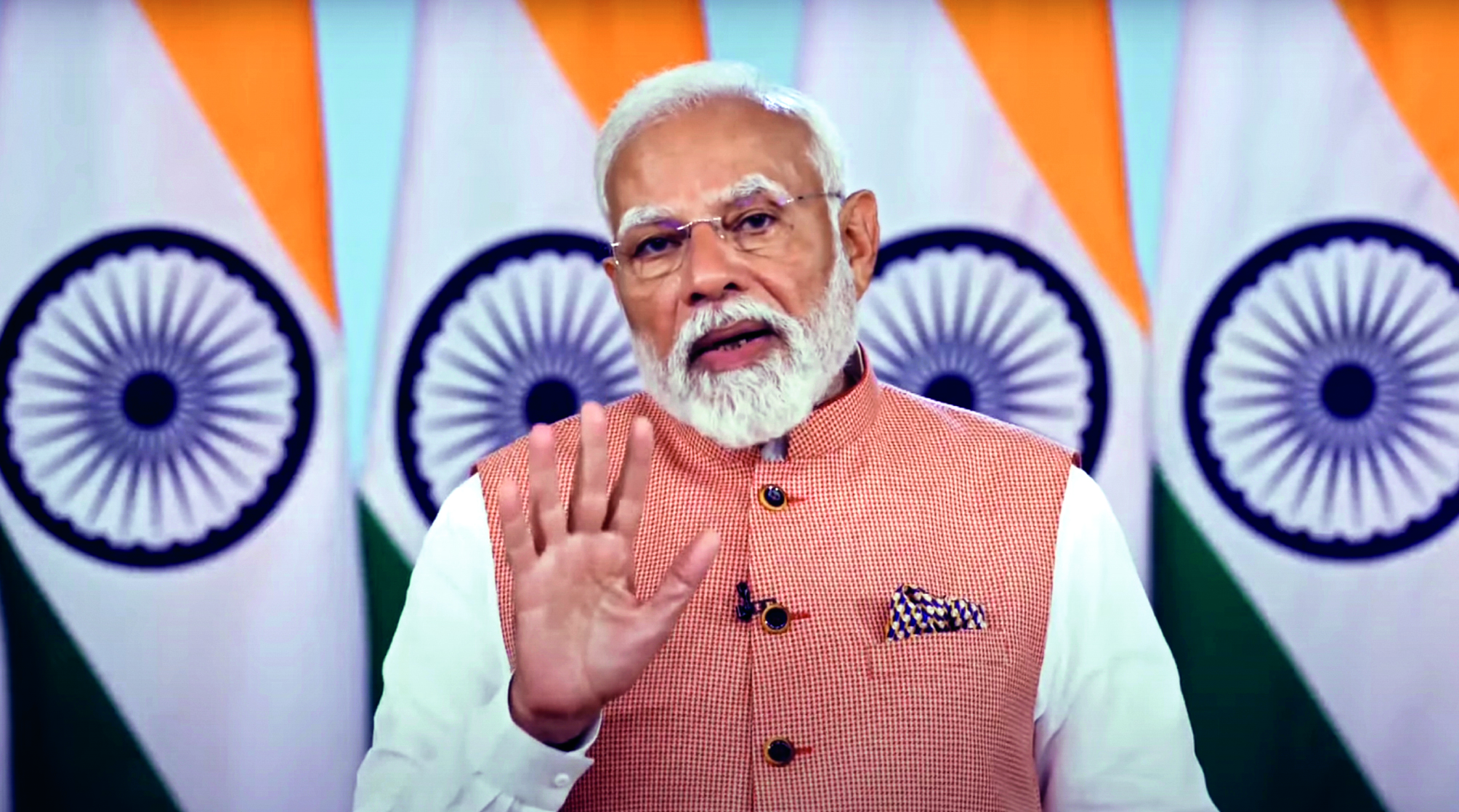PM Modi launches India Energy Week, highlights key energy goals

New Delhi: Prime Minister Narendra Modi on Tuesday emphasised India’s growing influence on the global stage, outlining the country’s ambitious energy aspirations during the inauguration of the 3rd edition of India Energy Week.
Speaking virtually, the Prime Minister highlighted that India’s energy vision is grounded in five key pillars: harnessing resources, fostering innovation, ensuring economic strength and political stability, leveraging its strategic geography for energy trade, and committing to global sustainability. “India is driving not only its growth but also the growth of the world, with the energy sector playing a significant role,” he stated.
Modi underscored the importance of the next two decades for realizing India’s vision of becoming a developed nation, with several ambitious milestones set for achievement in the coming years. These include adding 500 gigawatts of renewable energy capacity, achieving net-zero carbon emissions for Indian Railways, and producing five million metric tons of green hydrogen annually by 2030. While these targets may seem ambitious, Modi expressed confidence in their attainability, pointing to India’s remarkable progress over the last decade.
“India has grown from the tenth largest to the fifth largest economy in the past decade,” Modi said, adding that the country’s solar energy generation capacity has increased 32 times in the past 10 years, making it the third-largest solar power producer globally. He also highlighted India’s substantial progress in non-fossil fuel energy capacity, noting that the nation is a leader in meeting the Paris Agreement’s climate goals. Additionally, Modi pointed out India’s success in ethanol blending, which currently stands at 19 per cent, providing foreign exchange savings, boosting farmer income, and reducing CO2 emissions. The Prime Minister announced a goal of achieving a 20 per cent ethanol mandate by October 2025, emphasising the potential for rapid growth in India’s biofuels industry.
During his address, Modi also focused on the growing gas sector, mentioning significant discoveries and the expansion of gas infrastructure, which is driving an increased share of natural gas in India’s energy mix. He noted that India is the fourth-largest refining hub globally and is working to increase its refining capacity by 20 per cent. Highlighting India’s untapped hydrocarbon resources, the Prime Minister introduced reforms such as the Open Acreage Licensing Policy (OALP), which aims to attract investment and boost exploration in the upstream sector. He also emphasized the government’s efforts, including a single-window clearance system, to facilitate the exploration and production of oil and gas, especially in the maritime sector.
The Prime Minister also focused on the opportunities in local manufacturing, especially in the solar sector. Modi noted that India’s solar PV module manufacturing capacity has grown from 2 gigawatts to nearly 70 gigawatts over the last decade, driven by government initiatives such as the PLI scheme. He emphasized that these efforts have made India’s solar manufacturing sector more attractive and competitive. Additionally, Modi addressed the electric mobility and battery storage sectors, noting that India is rapidly advancing toward electric mobility to meet the demands of its vast population. He highlighted several announcements in the current year’s budget, including exemptions on critical minerals for the manufacturing of electric vehicle and mobile phone batteries. He pointed to the National Critical Minerals Mission as crucial for developing a robust supply chain for these minerals.
PM Modi also discussed India’s progress in nuclear energy and its potential to create green jobs, urging investments in the sector. He highlighted how the government’s initiatives are empowering ordinary families and farmers to become energy providers. Citing the PM Suryagarh Free Electricity Scheme as an example, he explained how the scheme is helping create new skills in the solar sector while generating investment opportunities.
He reaffirmed India’s commitment to providing energy solutions that fuel both economic growth and environmental sustainability. He expressed optimism that the India Energy Week 2025 would lead to meaningful discussions and outcomes, urging participants to explore the vast opportunities emerging in India’s dynamic energy sector.



